Today Current Affairs: 11th March 2022 for UPSC IAS exams, State PSC exams, SSC CGL, State SSC, RRB, Railways, Banking Exam & IBPS, etc
Table of Contents
Sahityotsa: Festival Of Letters Of Sahitya Akademi
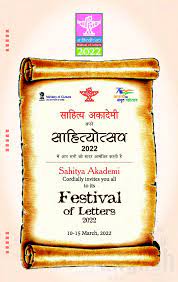
Sahityotsav, the Festival of Letters of Sahitya Akademi, India’s most inclusive literature festival will be held from 10th to 15th March 2022 in New Delhi.
- Festival of Letters 2022 will be a part of the celebrations to commemorate 75th anniversary of India’s Independence.
- The Exhibition will showcase Akademi‘s achievements and seminal events held in the previous year. The prestigious Sahitya Akademi Awards will be presented to the 24 Award winners on 11th March 2022.
- The Sahitya Akademi, India’s National Academy of Letters, is an organisation dedicated to the promotion of literature in the languages of India.
- Founded on 12 March 1954, it is supported by, though independent of, the Indian government (Ministry of Culture).
- Its office is located in Rabindra Bhavan in Delhi.
- It initially functioned under executive order, but was subsequently registered as a society under the Indian Societies Registration Act, 1860.
Women in United Nations Peacekeeping

Many women soldiers were training to be a part of a United Nations Peacekeeping mission.
- For more than a decade, the United Nations (UN) has called for more participation from women in conflict prevention, post-conflict peacebuilding and peacekeeping.
- UN Peacekeeping began in 1948 when the UN Security Council authorised the deployment of UN military observers to the Middle East.
- UN Peacekeeping helps countries navigate the difficult path from conflict to peace.
- It deploys troops and police from around the world, integrating them with civilian peacekeepers to address a range of mandates set by the UN Security Council (UNSC) and the General Assembly.
- For the first time in the history of UN peacekeeping, India sent an all-female Formed Police Unit (FPU) to be deployed in Liberia in 2007 after a civil war ravaged the African nation.
- Recently, at the UN Security Council (UNSC), Indian officials called for more female participation in public life and the elimination of violence against them as a prerequisite for promoting lasting peace around the world.
- In a profession that continues to be heavily dominated by men, and in a nation that is riddled with gender violence, these female police officers from India are breaking stereotypes to represent their country on the world stage.
What Is National Land Monetization Corporation (NLMC)?
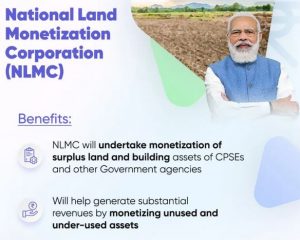
The Union Cabinet has approved the setting up National Land Monetization Corporation (NLMC) as a wholly owned Government of India company.
- The Finance Minister had announced plans to set up a special purpose vehicle for this purpose in the Union Budget 2021-22.
- In August, 2021, the government of India launched the National Monetisation Pipeline (NMP).
- NLMC will undertake surplus land asset monetisation as an agency function, and assist and provide technical advice to the Centre in this regard.
- NLMC has been announced with an initial authorized share capital of Rs 5000 crore and paid-up share capital of Rs 150 crore.
- The Board of Directors of NLMC will comprise senior Central Government officers and eminent experts to enable professional operations and management of the company.
- The Chairman, non-Government Directors of the NLMC will be appointed through a merit-based selection process.
- The new company, which will be set up under the administrative jurisdiction of the finance ministry.
- NLMC will hire professionals from the private sector just as in the case of similar specialised government companies like the National Investment and Infrastructure Fund (NIIF) and Invest India.
Virtual Smart Grid Knowledge Center (Virtual SGKC) And Innovation Park:
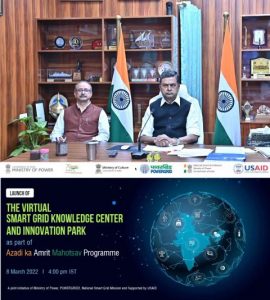
The Union Minister for Power has launched the Virtual Smart Grid Knowledge Center (Virtual SGKC) and Innovation Park.
- Virtual Smart Grid Knowledge Center (Virtual SGKC) Located within the powergrid centre in Manesar (Haryana), Virtual Smart Grid Knowledge Center (Virtual SGKC) is the first of its kind initiative by the Union government.
- The initiative, as part of Azadi ka Amrit Mahotsav Programme, will be one of the leading Centers of Excellence globally to foster innovation, entrepreneurship and research in smart grid technologies.
- It has been established by POWERGRID with support from the Union ministry of power and technical assistance from US Agency for International Development’s (USAID) for demonstration and advancement of frontier smart grid technologies.
- SGKC aims to be one of the leading Centers of Excellence globally to foster innovation, entrepreneurship and research in smart grid technologies and create capacities in the power distribution sector.
- It will enable a digital footprint of the physical setup of SGKC, the need for which was felt during Covid-19 pandemic.
- Smart Grid is an Electrical Grid with Automation, Communication and IT systems that can monitor power flows from points of generation to points of consumption (even down to appliances level) and control the power flow or curtail the load to match generation in real time or near real time.
- Smart Grids can be achieved by implementing efficient transmission & distribution systems, system operations, consumer integration and renewable integration.
- Smart grid solutions helps to monitor, measure and control power flows in real time that can contribute to identification of losses and thereby appropriate technical and managerial actions can be taken to arrest the losses.
New UPI Services By RBI: UPI123Pay And Digisaathi
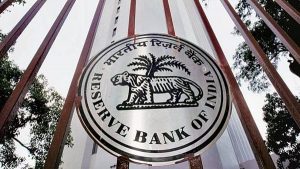
The Reserve Bank of India (RBI) has launched new UPI services for feature phones called UPI123Pay for non internet users to make digital payments, also launched a 24×7 helpline for digital payments called ‘Digisaathi’.
- ‘Digisaathi’ has also been set up by the National Payments Corporation of India (NPCI) to provide users with automated responses on information related to digital payment products and services.
- Presently it is available in English and Hindi language.
UPI 123 Pay:
- It will work on simple phones that do not have an internet connection.
- As of now, the UPI features are mostly available only on smartphones.
- The UPI service for feature phones will leverage the RBI’s regulatory Sandbox on Retail Payments.
- A regulatory sandbox usually refers to live testing of new products or services in a controlled/test regulatory environment for which regulators may permit certain regulatory relaxations for the limited purpose of the testing.
- The UPI service will enable digital transactions through a mechanism of ‘on-device’ wallet in UPI applications.”
- The users will be able to undertake a host of transactions based on four technology alternatives including- IVR (interactive voice response) number, missed call-based approach, app functionality in feature phones and proximity sound-based payments..
What Are Karewas?
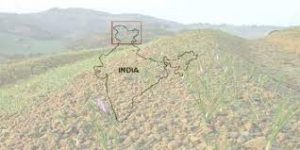
In the name of development, Kashmir’s highly fertile alluvial soil deposits called ‘karewas’ are being destroyed.
- Despite its agricultural and archaeological importance, karewas are now being excavated to be used in construction.
- In the Kashmiri dialect, the term Karewa means “elevated table land”.
- Firstly, this term was used by Godwin Austin in 1859 and later on by Lydekker in 1878 for unconsolidated to semi-consolidated sand clay conglomerate sequence.
- “Vudr” is the local name for Karewas in Kashmiri language.
- Karewas are the thick deposits of glacial clay and other materials embedded with moraines.
- These are unconsolidated lacustrine deposits. Lacustrine means “associated with lakes”.
- Kashmir valley resides between the Great Himalayas and the Pir Panjal ranges of the Kashmir Himalayas.
- In earlier times, when the upliftment of the Pir Panjal ranges happened, the flow of the river had stopped.
- As a result, the whole of Kashmir valley became a large lake.
- Slowly, the glacial deposits have accumulated here in this lake.
- Thus creating a large lacustrine plain.
- Later on, the water drained away and these unconsolidated deposits remained there.
- These unconsolidated gravel and mud deposits are known as Karewa formation.
- Karewa deposits have different soil and sediments such as sand, clay, silt, shale, mud, lignite and losses.
- Hence, these are very useful for agricultural and horticulture activities.
- Karewa formations are useful for the cultivation of Zafran is a local variety of Saffron in Kashmir valley.
- These are also important for the cultivation of almond, walnut, apple, and orchards.
Amendments To The Mines And Minerals (Development and Regulation) Act:
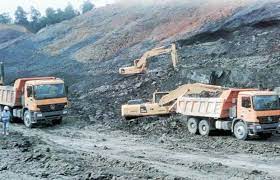
The Union Cabinet has approved amendments to the Second Schedule of the Mines and Minerals (Development and Regulation) Act, 1957 for specifying the rate of royalty in respect of Glauconite, Potash, Emerald, Platinum Group of Metals (PGM), Andalusite, Sillimanite and Molybdenum.
- The approval would ensure auction of mineral blocks in respect of Glauconite, Potash, Emerald, Platinum Group of metals, Andalusite and Molybdenum for the first time in the country.
- Minerals like Glauconite and Potash are used as fertilizer in agriculture.
- Platinum Group of Metals (PGM) are high value metal used in various industries and new innovative applications.
- Minerals like Andalusite, molybdenum are vital minerals used in industrial applications.
- Encouraging indigenous mining of these minerals is in the National interest that would lead to a reduction in imports in potash fertilizers and other minerals.
- This step taken by the Ministry of Mines is also expected to increase the generation of employment in the mining sector.
- It will also ensure increased availability of minerals for the downstream industries and support agriculture.
- The approval will lead to import substitution in respect of many important minerals for the economy of the country thereby saving valuable forex reserves. It will reduce the country’s foreign dependency through the local production of minerals.
RBI Conducted A $ 5 Billion Dollar-Rupee Swap:

The Reserve Bank of India (RBI) conducted a $ 5 billion dollar-rupee swap auction as part of its liquidity management initiative, leading to infusion of dollars and sucking out of the rupee from the financial system.
- The RBI sold $5.135 billion to banks on March 8 and simultaneously agreed to buy back the dollars at the end of the swap settlement period.
- When the central bank sells dollars, it sucks out an equivalent amount in rupees, thus reducing the rupee liquidity in the system.
- Dollar inflow into the market will strengthen the rupee which has already hit the 77 level against the US dollar.
- The swap auction can be done in the reverse way also when there is shortage of liquidity in the system.
- The RBI then buys dollars from the market and releases an equivalent amount in the rupees.
- The central bank’s move will reduce the pressure on inflation and strengthen the rupee.
- With the rupee under pressure and inflation posing a big risk to the economy, the central bank is expected to come out with more such measures to rein in inflation and prevent a big slide in the rupee.




